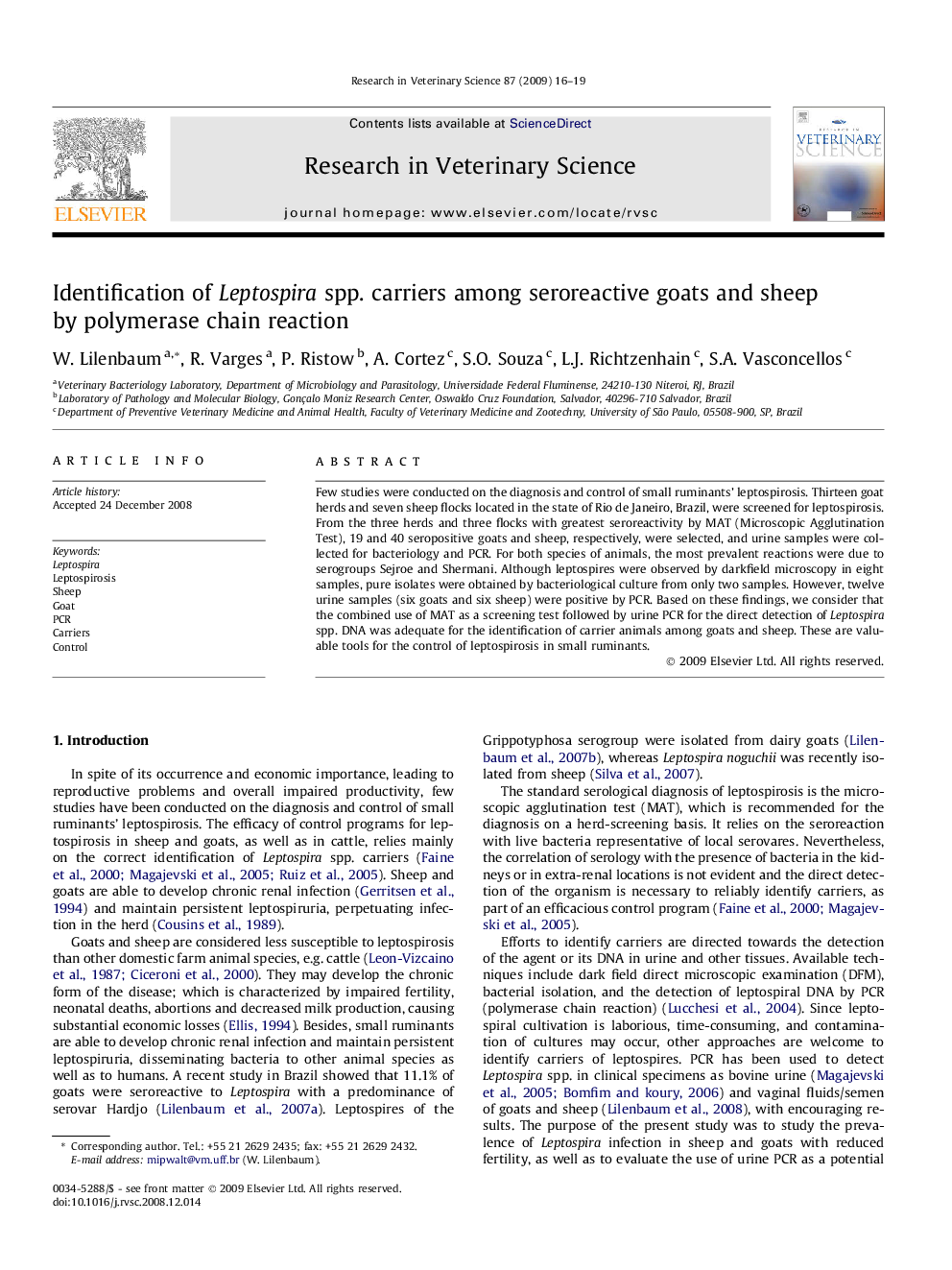| Article ID | Journal | Published Year | Pages | File Type |
|---|---|---|---|---|
| 2455976 | Research in Veterinary Science | 2009 | 4 Pages |
Few studies were conducted on the diagnosis and control of small ruminants’ leptospirosis. Thirteen goat herds and seven sheep flocks located in the state of Rio de Janeiro, Brazil, were screened for leptospirosis. From the three herds and three flocks with greatest seroreactivity by MAT (Microscopic Agglutination Test), 19 and 40 seropositive goats and sheep, respectively, were selected, and urine samples were collected for bacteriology and PCR. For both species of animals, the most prevalent reactions were due to serogroups Sejroe and Shermani. Although leptospires were observed by darkfield microscopy in eight samples, pure isolates were obtained by bacteriological culture from only two samples. However, twelve urine samples (six goats and six sheep) were positive by PCR. Based on these findings, we consider that the combined use of MAT as a screening test followed by urine PCR for the direct detection of Leptospira spp. DNA was adequate for the identification of carrier animals among goats and sheep. These are valuable tools for the control of leptospirosis in small ruminants.
